This post may contain affiliate links. Please read our disclosure policy.
Learn how to make the best sate Padang at home. The thick super aromatic gravy is the star of this popular sate that originated in Padang, West Sumatra.

There are many different kinds of sate/satay from different regions in Indonesia alone. One of my favorites is Sate Padang, from, needless to say, Padang (West Sumatra). Sate Padang is typically sold as street food in push cart in Indonesia. I especially love the thick sauce of sate padang. It’s almost curry-like I must say. According to wikipidia though, there are 3 different kinds of sate padang: Sate Pariangan (which I’ve never tasted before), Sate Padang Panjang (I’ve never tasted this too), and then Sate Padang (my favorite). They come from the same region but with different taste and color in the sauce. Honestly, I’ve only tasted Sate Padang, which they say is sort of the combination of both Sate Pariangan and Sate Padang Panjang.
My sister and I used to eat this every night. We were really the regular and the old man who sold sate padang with push cart would stop in front of our house sharp at 9 pm every night! This is not something you will typically see on the menu in restaurants, not in Indonesia and definitely not here in the U.S! It’s probably one of the most unknown sate outside of Indonesia as most people assume that sate is always served with peanut-based sauce.
This is adapted from a recipe that a friend gave me and this was my fourth attempt and we thought we were in heaven for a while when we had this. My kids absolutely love the sauce.

How to make the best Sate Padang at home
1. Bring 1.5 liter of water to a boil and then add the tongue (I used beef in this step-by-step because the tongue wasn’t available at the time) and boil for 15 minutes under medium heat.
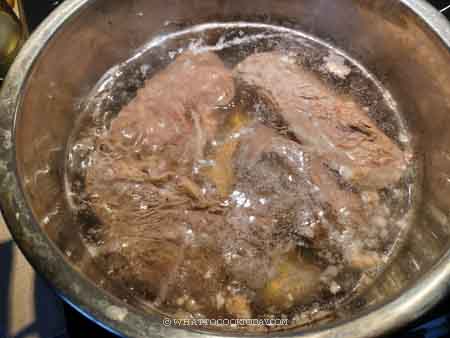
2. Save the cooking liquid
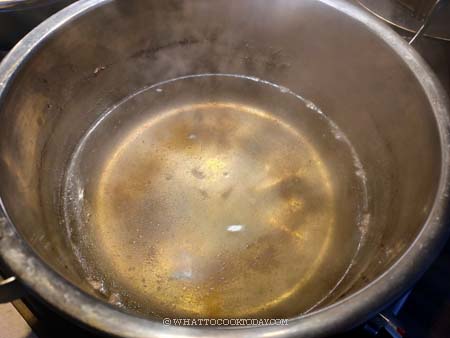
3. Remove the tongue/beef and let it rest for 10 minutes on a cutting board
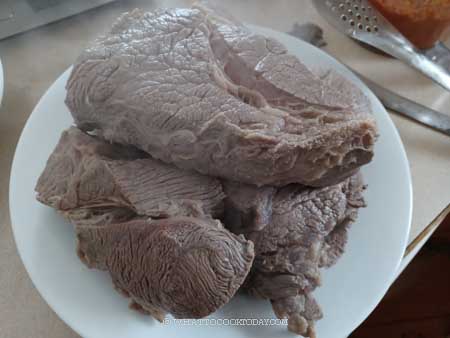
4. Cut the tongue/beef into about 2 x 2 cm and about 1 cm thick. Don’t cut too small or they will fall apart during cooking
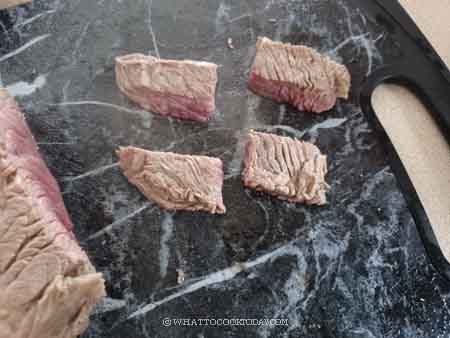
5. Put all ingredients for ground spices in a food processor and blend into a paste
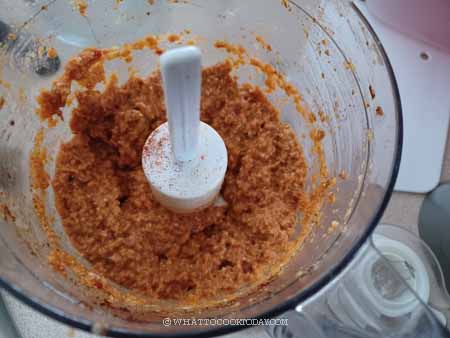
6. Preheat a heavy-bottom pot. Put 3 Tbsp of oil and saute the ground spices until fragrant, about 3-4 minutes
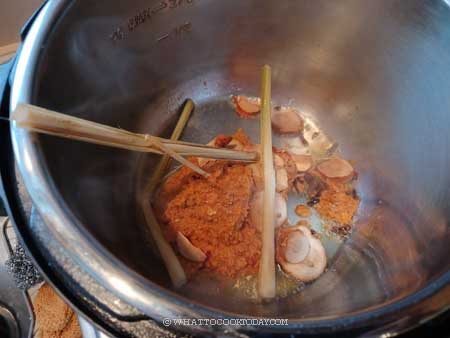
7. Add all ingredients under “other spices” in and continue to saute for another 5 minutes
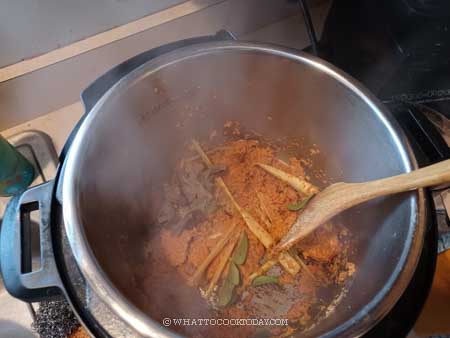
8. Add the parboiled tongue and saute for another minute. Add the liquid from boiling the meat. Bring back to a boil and then lower the heat to medium and cover to let the tongue simmer for about 30 minutes or until tender but not falling apart
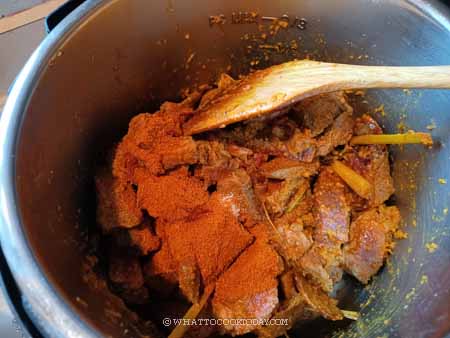
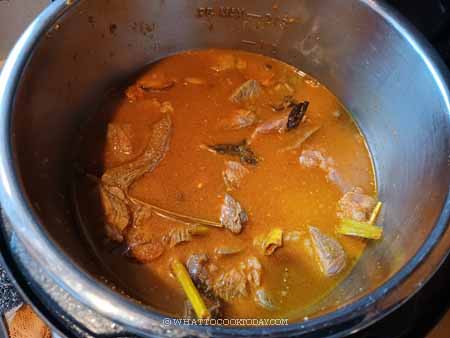
9. Leave the tongue/beef soaked in the broth for a minimum of 4 hours or overnight in the fridge if you can. This will add more flavor to the tongue
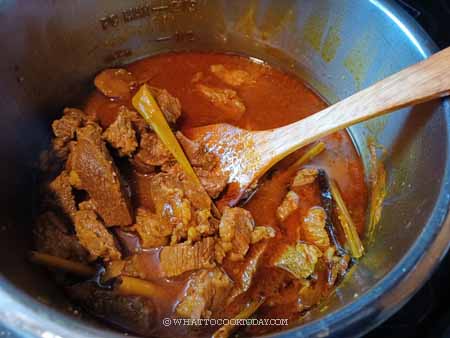
10. Then remove the tongue/beef from the broth and discard all the spices and herbs. If you put in the fridge you can heat it back up a little bit just to melt the fat that has solidified, then discard the spices, herbs and remove the tongue. Strain the broth and let it cool down before we thicken it. Have a taste and season the broth with salt to your taste.
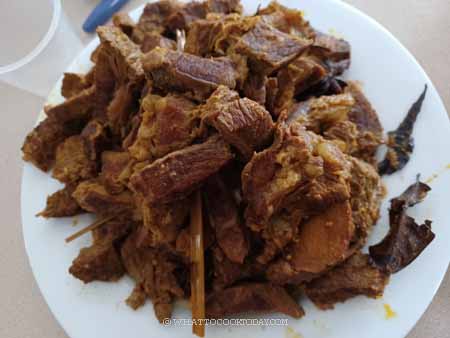
11. Thread tongue pieces onto the bamboo skewers, about 3-4 pieces for each skewer. Get your grill ready and brush the sate with some oil on both sides and grill until they are slightly browned but not too long so the meat won’t toughen and dried up too much. The tongues are cooked, we just want to brown them a bit. You can also preheat a large non-stick pan on the stove and put the sate on the pan and grill until slightly charred on both sides. Basting with some oil as needed. In Indonesia, most people like to use margarine to do this, but I think oil is good enough

12. Mix the rice flour with 2-3 large ladles of broth and stir to combine and make sure there are no lumps. Make sure the broth is not hot at this point.
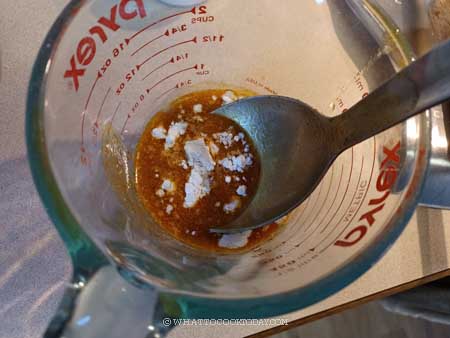
13. Pour half of the rice flour mixture back into the pot and stir to combine. Turn on the heat over medium-low and keep stirring. The broth will start to thicken and don’t stop stirring. It will curdle if you stop stirring. Check to see if you are happy with the consistency. Keep in mind that it will thicken further as it cools down. If you want it thicker, stir more of the rice flour mixture (remember to stir the rice flour mixture before pouring in as the flour and liquid may have separate)
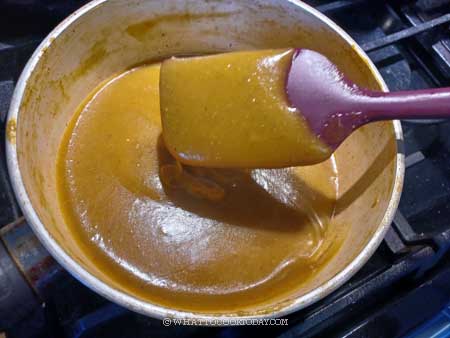
14. Put some sate and lontong/ketupat on a plate and then ladle the hot thickened sauce over, garnish with bawang goreng and serve immediately. In Medan, we love to serve this with fried beef skin. I served it with chicharron because that is what available here
I’m just happy to say that I’m able to introduce this delicious childhood street food that I’ve been craving so much to both of my kids and they absolutely gave it thumbs up !!

Did you make this Sate Padang recipe?
I love it when you guys snap a photo and tag to show me what you’ve made 🙂 Simply tag me @WhatToCookToday #WhatToCookToday on Instagram and I’ll be sure to stop by and take a peek for real!

The recipe was last published in 2016 and I have updated it on March 13, 2022 with some step-by-step photos and improved the recipe to make the sauce tastes even better and as authentic as possible.
How to make Sate Padang
Ingredients
- 1 kg ox tongue see notes
- 3 Tbsp oil plus mre for brushing the sate
- 1.5 litre liquid from cooking the tongue
- 40 Bamboo skewers Soak in a water for 1 hour so they won't burn when you grill your sate
Ground spices:
- 20 dried red chilies soak until soft and seeded, more if you want it spicier
- 15 gr turmeric or use 2 tsp turmeric powder
- 40 gr ginger roots
- 15 shallots peeled
- 10 cloves garlic peeled
- 10 candlenuts toasted on dry pan until aromatic
Other spices:
- 1 Tbsp good-quality curry powder
- 3 Tbsp coriander seeds
- 1 tsp fennel seeds
- 1 tsp white peppercorns
- 100 gr galangal roots cut into slices
- 4 stalk lemongrass bruised with heavy object
- 10 kaffir lime leaves tear the edges to release flavor
- 6 bay leaves (daun salam)
- 10 cloves
- 2 star anise
- 1 large cinnamon stick or use 2 tsp cinnamon powder
Seasonings:
- 1 tsp salt or more to taste
- 1 tsp sugar
- 1 tsp chicken powder
To thicken the sauce:
- 80 gr rice flour you may or may not need all
Serve with:
- Lontong
- Crispy fried shallots / bawang goreng
- Fried beef or chicaroon
Instructions
- Soak the bamboo skewers for at least 1 hour or overnight if you plan ahead. Then discard the soaking water when you are ready to use them
- Bring 1.5 liter of water to a boil and then add the tongue and boil for 15 minutes under medium heat. Save the cooking liquid. Remove the tongue and let it rest for 10 minutes on a cutting board. Cut the tongue into about 2 x 2 cm and about 1 cm thick. Don't cut too small or they will fall apart during cooking
- Put all ingredients for ground spices in a food processor and blend into a paste. Preheat a heavy-bottom pot. Put 3 Tbsp of oil and saute the ground spices until fragrant, about 3-4 minutes. Add all ingredients under "other spices" in and continue to saute for another 5 minutes. Add the parboiled tongue and saute for another minute. Add the liquid from boiling the meat. Bring back to a boil and then lower the heat to medium and cover to let the tongue simmer for about 30 minutes or until tender but not falling apart
- Leave the tongue soaked in the broth for a minimum of 4 hours or overnight in the fridge if you can. This will add more flavor to the tongue. Then remove the tongue from the broth and discard all the spices and herbs. If you put in the fridge you can heat it back up a little bit just to melt the fat that has solidified, then discard the spices, herbs and remove the tongue. Strain the broth and let it cool down before we thicken it. Have a taste and season the broth with salt to your taste.
Grill the sate:
- Thread tongue pieces onto the bamboo skewers, about 4-5 pieces for each skewer. Get your grill ready and brush the sate with some oil on both sides and grill until they are slightly browned but not too long so the meat won't toughen and dried up too much. The tongues are cooked, we just want to brown them a bit. You can also preheat a large non-stick pan on the stove and put the sate on the pan and grill until slightly charred on both sides. Basting with some oil as needed. In Indonesia, most people like to use margarine to do this, but I think oil is good enough
Thicken the broth:
- Mix the rice flour with 2-3 large ladles of broth and stir to combine and make sure there are no lumps. Make sure the broth is not hot at this point. Pour half of the rice flour mixture back into the pot and stir to combine. Turn on the heat over medium-low and keep stirring. The broth will start to thicken and don't stop stirring. It will curdle if you stop stirring. Check to see if you are happy with the consistency. Keep in mind that it will thicken further as it cools down. If you want it thicker, stir more of the rice flour mixture (remember to stir the rice flour mixture before pouring in as the flour and liquid may have separate)
To serve:
- Put some sate and lontong/ketupat on a plate and then ladle the hot thickened sauce over, garnish with bawang goreng and serve immediately. In Medan, we love to serve this with fried beef skin. I served it with chicharron because that is what available here



10 comments
Sate Padang with kerbau (ox) tongue is the best. I used to live in a small village halfway between Bukit Tinggi and Padang Panjang in West Sumatra, and the sate vendor would walk by tapping the crock pot of sauce with a spoon…. taste was unbelievably good.
You are making me feel nostalgic. OH yes, the tongue is best for sate Padang!!
Can rice flour be substitute with different kind of flour?
Hi,
I won’t substitute it with another type of flour though, for example like cornstarch or tapioca won’t be the same I don’t think.
Marv, I want these sooooo bad. Hmmm, do you think I can just use Chinese dried red chilies instead? Or will it alter the taste?
Hi Anita. Me too. I love Sate padang so much. I believe you can use dried red chilies, it shouldn’t alter the taste that much, if at all.
Hi, what sort of cut did you use?
Hi there,
I’ve tried chuck, brisket and ‘beef for stew’ before. I think I like brisket best among all
Thank you for this recipe. My future husband’s favorite. So of course I need to learn to make it properly. 🥰😂
I hope he’ll be impressed 😉